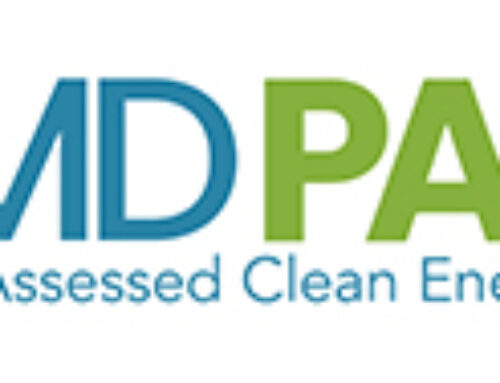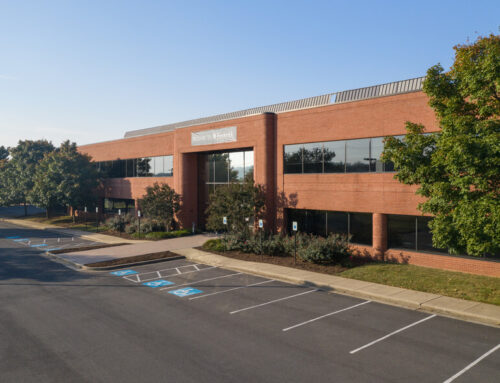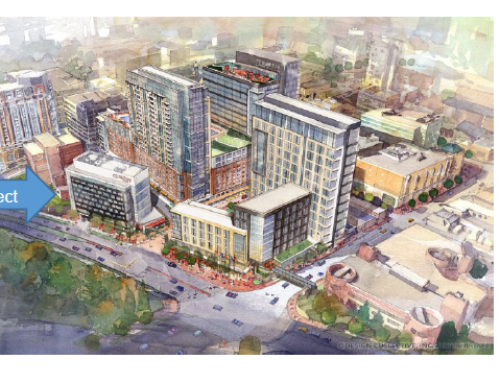Office building in Hanover, Maryland accesses 3.7 million in C-PACE financing in final months of 2020 for Near Net Zero Energy Project
FOR IMMEDIATE RELEASE
December 22nd, 2020
Hanover, MD. – The MD-PACE Program is pleased to approve more than $3,700,000 in C-PACE for the office building located at 7250 Parkway Drive in Hanover, Maryland. The capital provider for this project is Counterpointe Sustainable Real Estate, a national leader in C-PACE financing. The Design/Builder for this project is Consolidated Energy Design, Inc., patent holders of FADRS® (pronounced faders) Smart Grid Technology. 7250 Parkway Drive is the largest instance of C-PACE financing for an office space in the MD-PACE Program.
The owner of the 7250 Parkway Drive office property sought more than $3.7 million in C-PACE financing in order to install a FULLY AUTOMATED FADRS® Smart Micro-Grid Technology system that would orchestrate interrelated 100% Business Continuity, energy generation and efficiency and power grid arbitrage with benefits to the tenants, owners, the power grid and the environment (905 metric tons of GHG Emission reduction PER YEAR).
These improvements include a 65kW AC solar PV system, 500 KWH/125 KW Battery Energy Storage System (BESS), 400 KW Distributed Generation, EV charging stations, a deep retrofit of the interior lighting and plug loads, high efficiency motor replacements and new variable frequency drives.
When fully operational, the combined improvements will avoid an estimated $198,255.00 annually (almost $200,000 annually), reducing yearly expected energy use by 1,279,290 kWh. Industry experts estimate the savings to investment ratio of this project is 1.77.
Further benefiting this project, the C-PACE loan term from Counterpointe Sustainable Real Estate is twenty years and the first payment will be made via the special property tax assessment in September of 2021. 7250 Parkway Drive demonstrates a wide range of eligible C-PACE improvements that help to increase efficiency and profitability, with investments made to reduce the energy required by lighting, plug loads, HVAC by providing a dependable and inexpensive form of on-site energy production, and optimize energy usage drawn from the grid. For more information on how commercial properties can harness microgrid technology to save money, read the MD-PACE Program article on C-PACE and energy storage.
Office space is a prime candidate for efficiency improvements and C-PACE. Offices require large amounts of electricity and water for lighting, climate control, and powering appliances necessary for business operations. According to the U.S. Energy Information Administration (EIA), office space was the second highest commercial user of electricity of which lighting was the largest single contribution. The potential for savings are clear, though the owners of office space may feel that they are unable to take steps to address these inefficiencies due to insufficient capital and the prioritization of core business needs. C-PACE helps to circumvent many of these issues through providing funding for capital-intensive projects immediately and with a deferred payback period that can mirror the estimated useful life of the installed improvement.
The 2020 pandemic unexpectedly affected businesses and lending this year, including being a catalyst for property improvements to take greater priority in order to reduce utility costs and finance improvements for the benefit of worker health. Though most offices are still closed pending reopening processes, many property managers in Maryland are taking this time to invest in the profitability of their sparsely occupied or vacant buildings[1]. Some experts believe that energy efficiency may also help to remedy the current economic downturn. In an article published September 24th of this year by the World Resources Institute entitled “Accelerating Recovery for People Through Building Energy Efficiency”, the author points to energy efficiency as a untapped source of profit citing a detailed study by the EIA that estimates that investing in sustainable buildings could save the United States 1.1 trillion by 2050 (707 million metric tons of GHG Emission reduction). Further, the airborne threat that COVID-19 poses can be substantially reduced by increasing maintaining indoor Relative Humidity between 40% – 60% and installing UV germicidal lamps and or needle-point bi-polar ionization while not negatively impacting energy savings as a result of an alternate energy wasting method of preheating/precooling excessive amounts of outside air. Additional health improvements with potential C-PACE eligibility include automatic flush toilets, touch free lighting, and automatic doors.
About the MD-PACE Program
The MD-PACE program is sponsored by the Maryland Clean Energy Center (MCEC), a corporate instrumentality of the state of Maryland which advances the adoption of clean energy, energy efficiency products, services and technologies. MCEC leverages private capital to help homeowners, businesses, and government entities reduce energy costs. The MD-PACE program offers C-PACE financing to commercial property owners statewide.
[1] 11/20/2020 Phone Call with Howard County Economic Development Authority representatives




